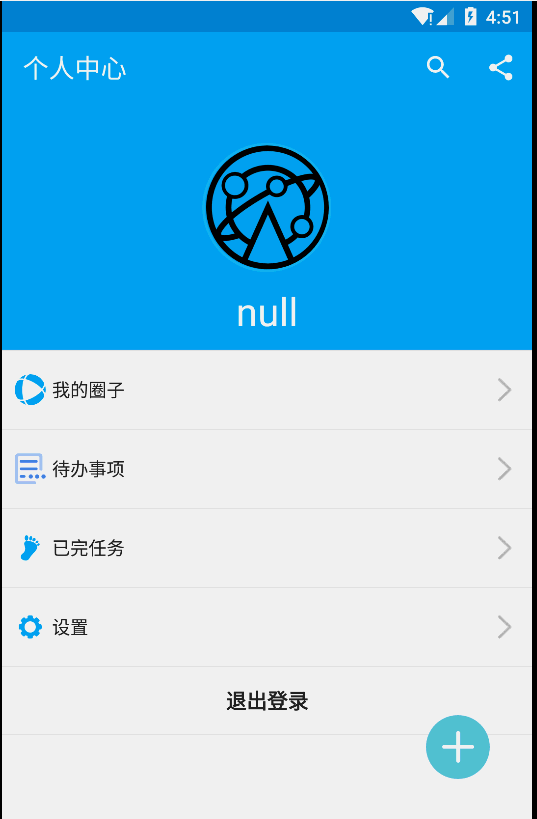package com.legend.ffpmvp.common.view;
import android.animation.Animator;
import android.animation.ValueAnimator;
import android.content.Context;
import android.support.v4.view.MotionEventCompat;
import android.support.v4.view.ViewCompat;
import android.util.AttributeSet;
import android.view.MotionEvent;
import android.view.ViewConfiguration;
import android.view.animation.DecelerateInterpolator;
import android.widget.ScrollView;
public class RubberScrollView extends ScrollView {
private boolean isRestoring;
private int mActivePointerId;
private float mInitialMotionY;
private boolean isBeingDragged;
private float mScale;
private float mDistance;
private int mTouchSlop;
public RubberScrollView(Context context, AttributeSet attrs) {
super(context, attrs);
mTouchSlop = ViewConfiguration.get(getContext()).getScaledTouchSlop();
}
@Override
public boolean onInterceptTouchEvent(MotionEvent event) {
int action = MotionEventCompat.getActionMasked(event);
if (isRestoring && action == MotionEvent.ACTION_DOWN) {
isRestoring = false;
}
if (!isEnabled() || isRestoring || (!isScrollToTop() && !isScrollToBottom())) {
return super.onInterceptTouchEvent(event);
}
switch (action) {
case MotionEvent.ACTION_DOWN: {
mActivePointerId = event.getPointerId(0);
isBeingDragged = false;
float initialMotionY = getMotionEventY(event);
if (initialMotionY == -1) {
return super.onInterceptTouchEvent(event);
}
mInitialMotionY = initialMotionY;
break;
}
case MotionEvent.ACTION_MOVE: {
if (mActivePointerId == MotionEvent.INVALID_POINTER_ID) {
return super.onInterceptTouchEvent(event);
}
final float y = getMotionEventY(event);
if (y == -1f) {
return super.onInterceptTouchEvent(event);
}
if (isScrollToTop() && !isScrollToBottom()) {
float yDiff = y - mInitialMotionY;
if (yDiff > mTouchSlop && !isBeingDragged) {
isBeingDragged = true;
}
} else if (!isScrollToTop() && isScrollToBottom()) {
float yDiff = mInitialMotionY - y;
if (yDiff > mTouchSlop && !isBeingDragged) {
isBeingDragged = true;
}
} else if (isScrollToTop() && isScrollToBottom()) {
float yDiff = y - mInitialMotionY;
if (Math.abs(yDiff) > mTouchSlop && !isBeingDragged) {
isBeingDragged = true;
}
} else {
return super.onInterceptTouchEvent(event);
}
break;
}
case MotionEventCompat.ACTION_POINTER_UP:
onSecondaryPointerUp(event);
break;
case MotionEvent.ACTION_UP:
case MotionEvent.ACTION_CANCEL:
mActivePointerId = MotionEvent.INVALID_POINTER_ID;
isBeingDragged = false;
break;
}
return isBeingDragged || super.onInterceptTouchEvent(event);
}
@Override
public boolean onTouchEvent(MotionEvent event) {
switch (MotionEventCompat.getActionMasked(event)) {
case MotionEvent.ACTION_DOWN:
mActivePointerId = event.getPointerId(0);
isBeingDragged = false;
break;
case MotionEvent.ACTION_MOVE: {
float y = getMotionEventY(event);
if (isScrollToTop() && !isScrollToBottom()) {
mDistance = y - mInitialMotionY;
if (mDistance < 0) {
return super.onTouchEvent(event);
}
mScale = calculateRate(mDistance);
pull(mScale);
return true;
} else if (!isScrollToTop() && isScrollToBottom()) {
mDistance = mInitialMotionY - y;
if (mDistance < 0) {
return super.onTouchEvent(event);
}
mScale = calculateRate(mDistance);
push(mScale);
return true;
} else if (isScrollToTop() && isScrollToBottom()) {
mDistance = y - mInitialMotionY;
if (mDistance > 0) {
mScale = calculateRate(mDistance);
pull(mScale);
} else {
mScale = calculateRate(-mDistance);
push(mScale);
}
return true;
} else {
return super.onTouchEvent(event);
}
}
case MotionEventCompat.ACTION_POINTER_DOWN:
mActivePointerId = event.getPointerId(MotionEventCompat.getActionIndex(event));
break;
case MotionEventCompat.ACTION_POINTER_UP:
onSecondaryPointerUp(event);
break;
case MotionEvent.ACTION_UP:
case MotionEvent.ACTION_CANCEL: {
if (isScrollToTop() && !isScrollToBottom()) {
animateRestore(true);
} else if (!isScrollToTop() && isScrollToBottom()) {
animateRestore(false);
} else if (isScrollToTop() && isScrollToBottom()) {
if (mDistance > 0) {
animateRestore(true);
} else {
animateRestore(false);
}
} else {
return super.onTouchEvent(event);
}
break;
}
}
return super.onTouchEvent(event);
}
private boolean isScrollToTop() {
return !ViewCompat.canScrollVertically(this, -1);
}
private boolean isScrollToBottom() {
return !ViewCompat.canScrollVertically(this, 1);
}
private float getMotionEventY(MotionEvent event) {
int index = event.findPointerIndex(mActivePointerId);
return index < 0 ? -1f : event.getY(index);
}
private void onSecondaryPointerUp(MotionEvent event) {
final int pointerIndex = MotionEventCompat.getActionIndex(event);
final int pointerId = event.getPointerId(pointerIndex);
if (pointerId == mActivePointerId) {
int newPointerIndex = pointerIndex == 0 ? 1 : 0;
mActivePointerId = event.getPointerId(newPointerIndex);
}
}
private float calculateRate(float distance) {
float originalDragPercent = distance / (getResources().getDisplayMetrics().heightPixels);
float dragPercent = Math.min(1f, originalDragPercent);
float rate = 2f * dragPercent - (float) Math.pow(dragPercent, 2f);
return 1 + rate / 5f;
}
private void animateRestore(final boolean isPullRestore) {
ValueAnimator animator = ValueAnimator.ofFloat(mScale, 1f);
animator.setDuration(300);
animator.setInterpolator(new DecelerateInterpolator(2f));
animator.addUpdateListener(new ValueAnimator.AnimatorUpdateListener() {
@Override
public void onAnimationUpdate(ValueAnimator animation) {
float value = (float) animation.getAnimatedValue();
if (isPullRestore) {
pull(value);
} else {
push(value);
}
}
});
animator.addListener(new Animator.AnimatorListener() {
@Override
public void onAnimationStart(Animator animation) {
isRestoring = true;
}
@Override
public void onAnimationEnd(Animator animation) {
isRestoring = false;
}
@Override
public void onAnimationCancel(Animator animation) {
}
@Override
public void onAnimationRepeat(Animator animation) {
}
});
animator.start();
}
private void pull(float scale) {
this.setPivotY(0);
this.setScaleY(scale);
}
private void push(float scale) {
this.setPivotY(this.getHeight());
this.setScaleY(scale);
}
}



